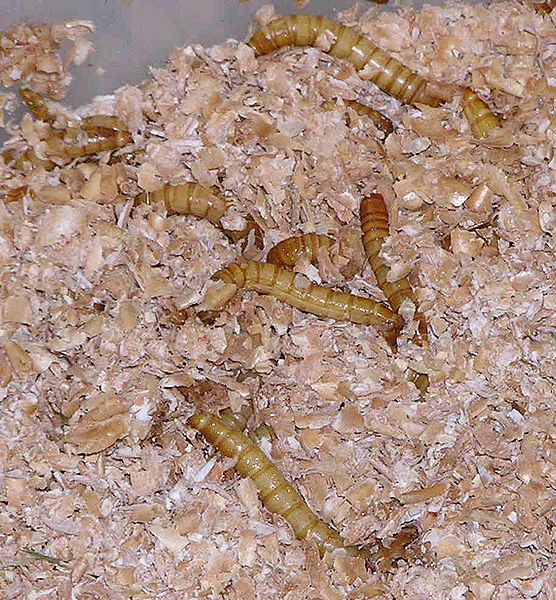Please see Part I of this article for information on collecting insects for pet birds.
Today we’ll discuss breeding invertebrates at home, and take a look at some useful insect products. Please see the articles referenced below for further details on each of these topics.
Raising Invertebrates
 In addition to being an interesting endeavor, established colonies of invertebrates will provide you with a year-round supply of (largely free) live food. Also, you will have access to individual insects of varied sizes, an important consideration to those with mixed collections or nesting birds.
In addition to being an interesting endeavor, established colonies of invertebrates will provide you with a year-round supply of (largely free) live food. Also, you will have access to individual insects of varied sizes, an important consideration to those with mixed collections or nesting birds.
Nutritional Value
Home-raised insects can be “nutrient loaded” (please see below) so as increase their value as a food item, and can be selected when they are at the most nutritious stage of their life cycle (i.e. newly molted and pupating mealworms). The plumage of birds fed upon live insects often takes on a brilliance not seen in their “less fortunate” cousins (please see photo of Strawberry Finch).
Available Species
 Crickets, mealworms, wax worms and fruit flies are the most commonly reared insects, but there are numerous other species to consider. Roaches, despite their bad reputations, should not be ignored (only .3% of the world’s 4,500 species are household pests). The soft-bodied orange spotted roaches are slow moving and, unable to climb glass, rarely escape their enclosures (please see below).
Crickets, mealworms, wax worms and fruit flies are the most commonly reared insects, but there are numerous other species to consider. Roaches, despite their bad reputations, should not be ignored (only .3% of the world’s 4,500 species are household pests). The soft-bodied orange spotted roaches are slow moving and, unable to climb glass, rarely escape their enclosures (please see below).
Sowbugs and earthworms are among the most useful and readily accepted of all invertebrates. Widely kept by zoos and European and Asian aviculturists, they are, for some reason, largely overlooked in private collections in the USA. Both are very easy to rear and breed; starter cultures are available commercially or may be collected.
Canned and Freeze-Dried Invertebrates
Canned grasshoppers, caterpillars and other invertebrates and freeze dried flies and Daphnia, marketed for pet reptiles and fishes, offer very useful options to enterprising bird keepers. I cannot understand why they are not more widely used (I keep hammering away at the point in my articles!), but hope they will come into their own soon.
Further Reading
Please see the following articles for further details on prepared insect products and invertebrate breeding:
Feeding Insects to Pet Birds: Anole Food Dried Invertebrates for Birds
Raising Orange Spotted Roaches
Images referenced from Wikipedia and originally posted by Shyamal and Rasbak
 That Bird Blog – Bird Care and History for Pet Birds
That Bird Blog – Bird Care and History for Pet Birds

